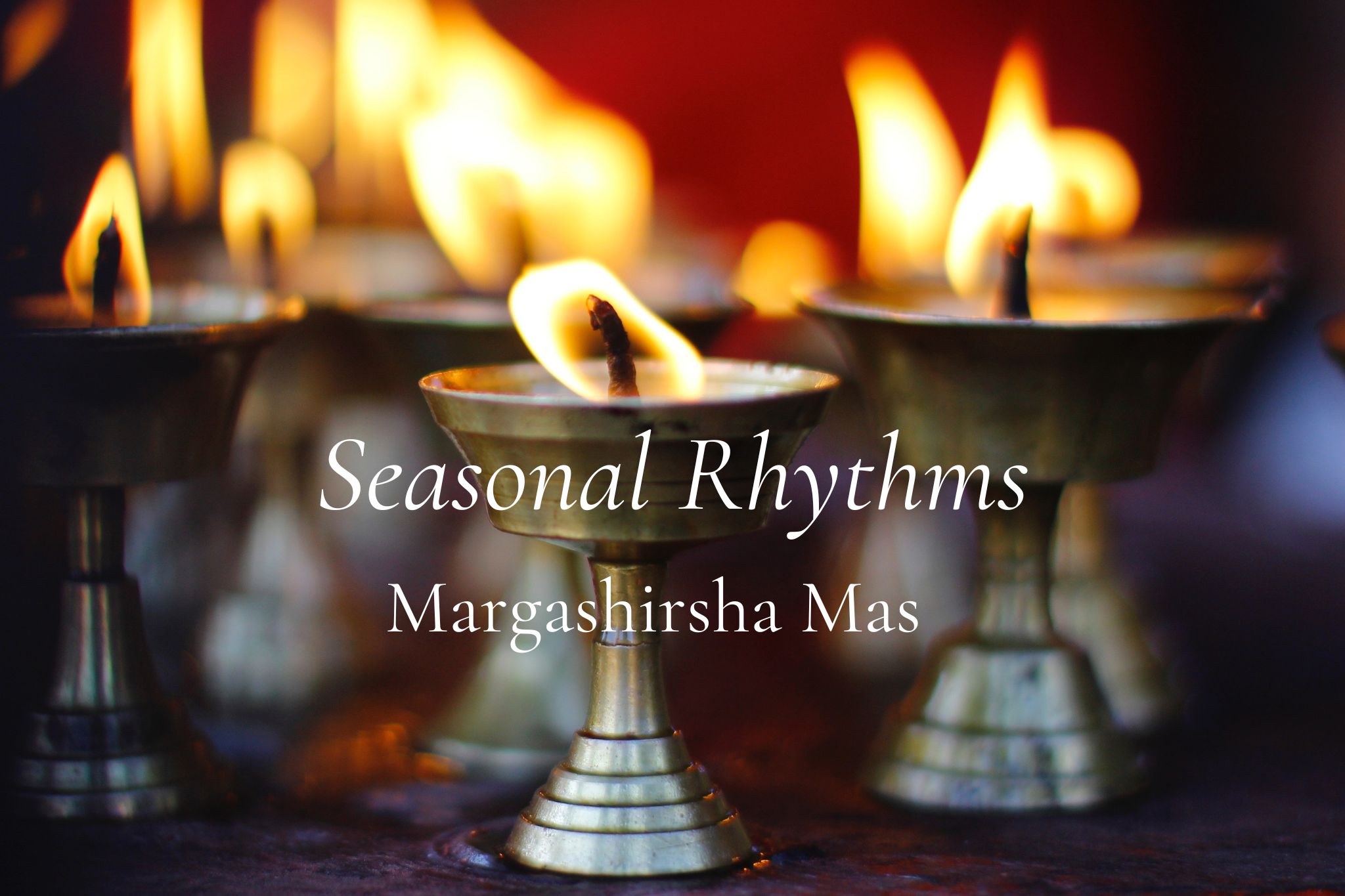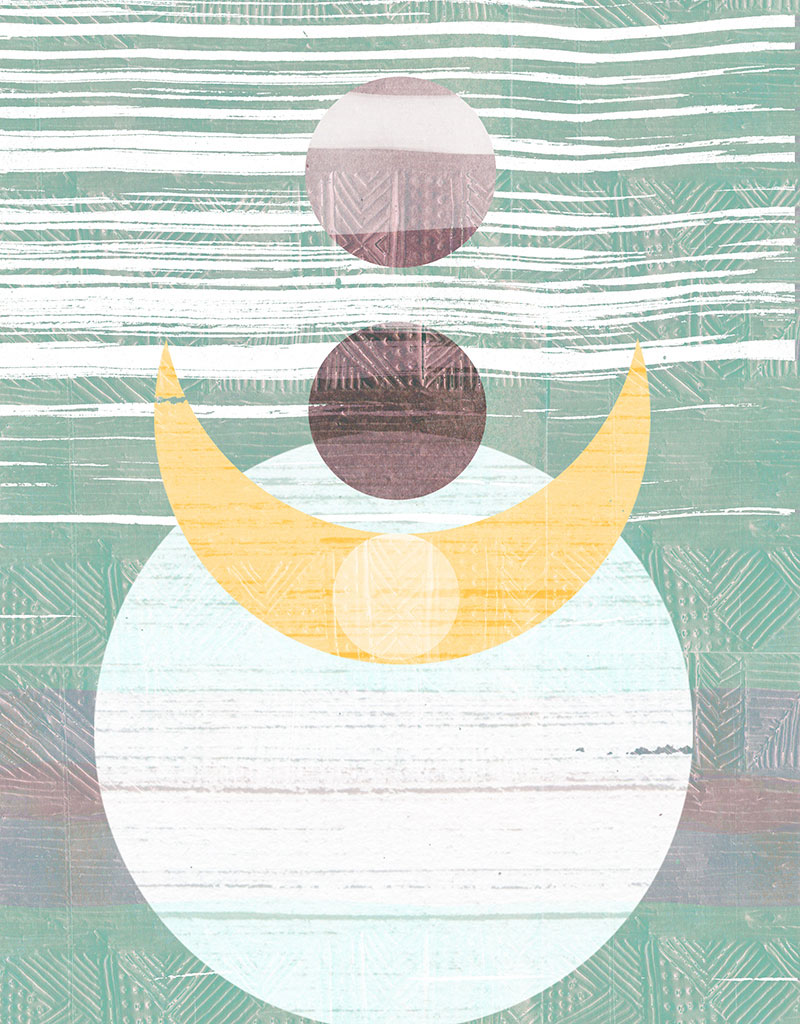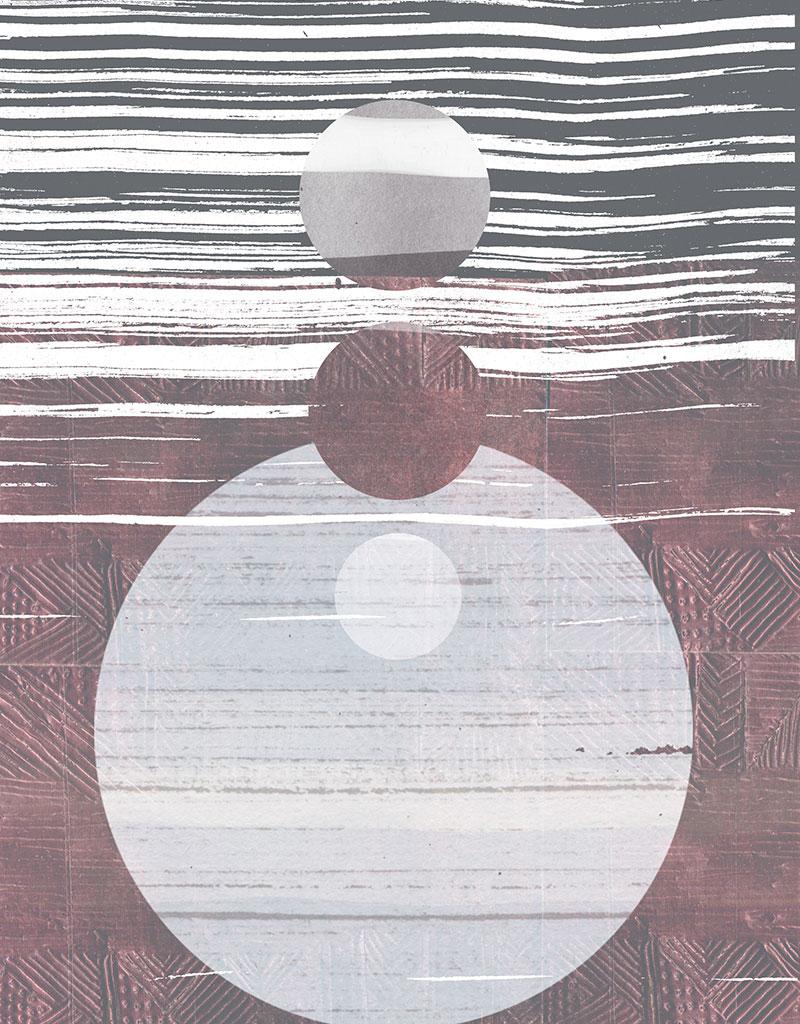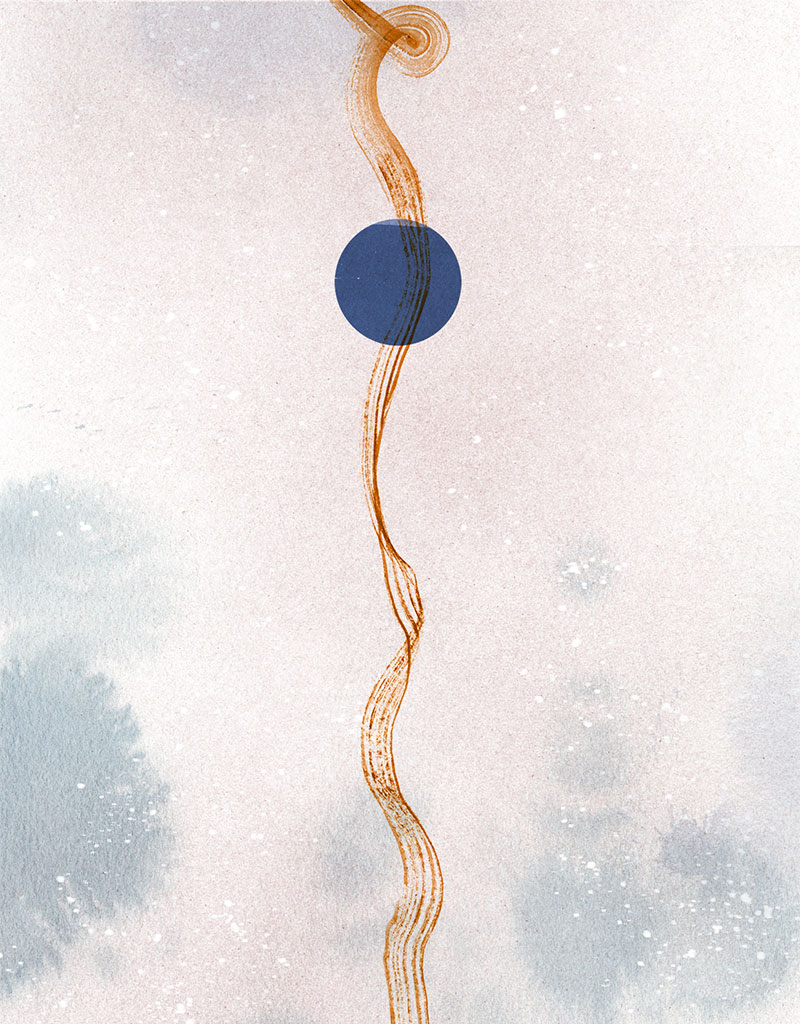Nilakshi Sharma

The corn is charming with new sprouts, the rice is ripe, the lodhra blossoming, lotus blooms have disappeared,
and frost has begun to form: this is the time of winter’s onset, and it has now arrived.
Ritusamharam by Kalidasa
Margashirsha month brings with it the four months long winter season, starting with Hemanta rtu. The brilliant clarity and beauty of Sharad rtu now gentles and fades into mists and a time of increasing quietude.
Hemanta rtu or winter season is the time of retreat, of a quietening of the external world of senses. As the mists and then snow blanket the earth and the cold drives us all to seek the warmth of shelter, nature offers all of our senses a respite – gently telling us that this is the season to turn inwards, to nourish and nurture our bodies and our minds.
Rituals of Warmth
Hemanta rtu is characterised by cold and a Sun that becomes a pale disc in leaden skies, without offering any warmth. Quite apart from the physical cold, the change in light from the cheery sunlight towards a pale diffuse light also has a psychological impact on us. As a result of the cold combined with grey, gloomy overcast days many people begin to experience lower energy, moodiness and even a general sense of melancholy. While some people may genuinely experience SAD – Seasonal Affective Disorder, for most of us this is a general gloominess.
The traditional rituals of winter can help us alleviate this and nourish both our body as well our mind.
Lighting a lamp: A beautiful way to counteract the impact of diffuse grey winter days is to light a traditional lamp. Watching the bright burning flame of a diya can have a very calming and grounding effect on our mood and mind. Using tea lights and candles can also have the same impact. Similarly, using yellow lighting as opposed to fluorescent lighting in your home can also help alleviate the gloominess that winter can create for so many of us.
Abhyanga: A very traditional self care practice is that of giving oneself a massage with gently warmed oil. In winters this ritual is particularly beneficial. Gently warm oil – Sesame, Mustard or best of all, an Ayurvedic herbal body oil. Massage the body in gentle long strokes. Let the oil soak into the body for 15 to 20 minutes before bathing. Ideally bathe with an ubtan – a traditional mix of powdered grains and clays. A regular practise of Abhyanga results in nourished, supple skin. This practise is also beneficial for the nervous system - in mitigating stress and helping us feel more grounded. Along with gently improving blood circulation, regular Abhyanga also pacifies Vata dosha. For best results practise Abhyanga every day.
Digestive Agni: Winter is the season of Kapha dominance, which for many of us can also result in congestion, especially if we succumb to a flu at the start of the season. Ayurveda teaches us how to strengthen and nourish our inner agni, which translates as digestive fire. If our body is in a state of balance then naturally, our digestive fires are strong in winter, thereby enabling us to consume the foods that are typically recommended for the season – dry fruits in traditional recipes such as Pinni laddoos, Sesame (till) laddoos etc. For those of us who have succumbed to flus and are therefore trying to deal with congestion, tisanes made with warming spices can be very beneficial.
Below are some of the recipes and tips shared by Ayurvedic doctor Dr Vasant Lad. According to him the best remedy for colds is Ginger and the best remedy for phlegm or congestion is Black Pepper.
- Combine Dry Ginger powder 1 part + Cinnamon powder 1 part + Lemongrass (dried herb) 2 parts. Steep 1 teaspoon of this mixture for 5 to 7 minutes in a cup of hot water, strain and drink. You can add Honey for sweetness just before drinking. This should offer relief in cases of cold, cough and flu. This tea can be had a few times a day.
- Mix Cinnamon powder ½ teaspoon + 1 teaspoon Honey. Have this 2 to 3 times a day for relief from a cold accompanied by congestion and cough.
- Freshly ground Black Pepper 1 teaspoon + Honey or Ghee 1 teaspoon is very effective in relieving congestion and helping release accumulated phlegm and thus reducing persistent cough. Have up to 3 times a day, consistently for 3 to 5 days for best result. This remedy works well on a full stomach and if you want you can sip a little hot water after consuming the Pepper paste.
Rituals of Fragrance
Fragrance can be a beautiful way to brighten your mood and your house in winters. Create fragrant rituals for the home in a season where fragrant flowers are rarely to be found easily and effectively by using a Dhuna - a traditional ritual of sprinkling a fragrant resinous blend over a burning charcoal and carrying the dhuna throughout the house to let the fragrant smoke chase away the lingering blues from every corner. Incense is also effective for creating a fragrant environment. Fragrant candles and aromatherapy blends are also easy ways to introduce fragrance in the house. Try using blends or candles with citrus notes such as Neroli and Lemon, which are known to have an uplifting effect on the mind and mood.
Rituals of Solitude: Meditation Practice
Margashirsha is one of the months that is traditionally a time for turning inwards, for practices that nourish and build strength in the body and soul. Thus, this is the best time to deepen our meditation routines or to create them if we don’t have any. The quieter, heavier energy of the season and the month subtly encourages practices of silence, reflection and inward focus.
There is a very wide range of meditation practices available. We all need to find the ones that appeal to us and work with our lifestyle and our needs. But for those who are still searching and experimenting, we are again sharing some practices that might be of interest.
Sacral Chakra Meditation: In the Vedic worldview there are seven Chakras or energy centres in our bodies: Muladhara – Root chakra, Svadhisthana- Sacral or Pelvic chakra, Manipura – Navel chakra, Anahata- Heart chakra, Vishuddha – Throat chakra, Ajna – Third Eye chakra and Sahastrahara – Crown chakra. They are thought to be key points that impact us physically, emotionally and spiritually. Each Chakra has its own colour, sound, iconography and mantra. The chakras are also deeply linked to the energy of the five elements. This in turn links them to both – the three Ayurvedic doshas in our body as well as the seasons and their energy. When winter comes it is a good time to focus more on meditation centred around the Sacral or Pelvic chakra.
The element of Sacral chakra is water, upon which the season has a palpable impact – it becomes cold and freezes into snow. It is the water element that gives us fluidity and the ability to adapt and accept – in our body, mind and emotions. The stiffness that we can often feel in our bodies in winter can also be seen as the freezing of the water in this season. Meditation practices centred around the Sacral chakra help us keep our minds, bodies and emotions fluid and flowing instead of becoming stiff and stagnant. A physical sign that we need to work on the energy of our Sacral chakra is the tightness in our lower back and hips. Along with the meditation practices that focus on the energy of the Pelvic chakra, Yoga postures that help open up our hips, such as the butterfly posture (Bhadrasana), are also highly recommended.
Tratak Meditation: This is a traditional meditation practice that is also one of the six practices or Shat Kriyas of cleansing. Loosely translated as Flame Gazing, Tratak is a meditation practice that involves gazing at a steady flame – ideally a diya (earthen lamp) filled with Ghee (clarified butter) and a handmade wick of cotton. Ensure that the lit diya is placed at eye level height and that there are no air drafts in the room. The steadier the flame, the better it is. It is ideal to learn the practice of Tratak meditation from a Yoga teacher. Among the benefits that nearly all forms of meditation bestow on the practitioner, Tratak is also thought to be very beneficial for the eyes and eyesight.
Winter’s Beauty
Even to this season of leaden skies and grey days there is a quiet delight. For me, this is the time of stillness and reflection. If we but allow ourselves to feel it, there is a palpable sense of slowing down in the natural world. The hectic festivities of Ashwin and Kartika now give way to a sense of peace. This is a good time to nurture our spirits with practices such as mediation and nourish our bodies with the right foods and with rituals of self care. It is the season for long restful evenings at home, to cook rich delicious foods and to ruminate. To find our centres and ground ourselves.
May Margashirsha offer you the peace and quiet that helps strengthen your body and mind.





